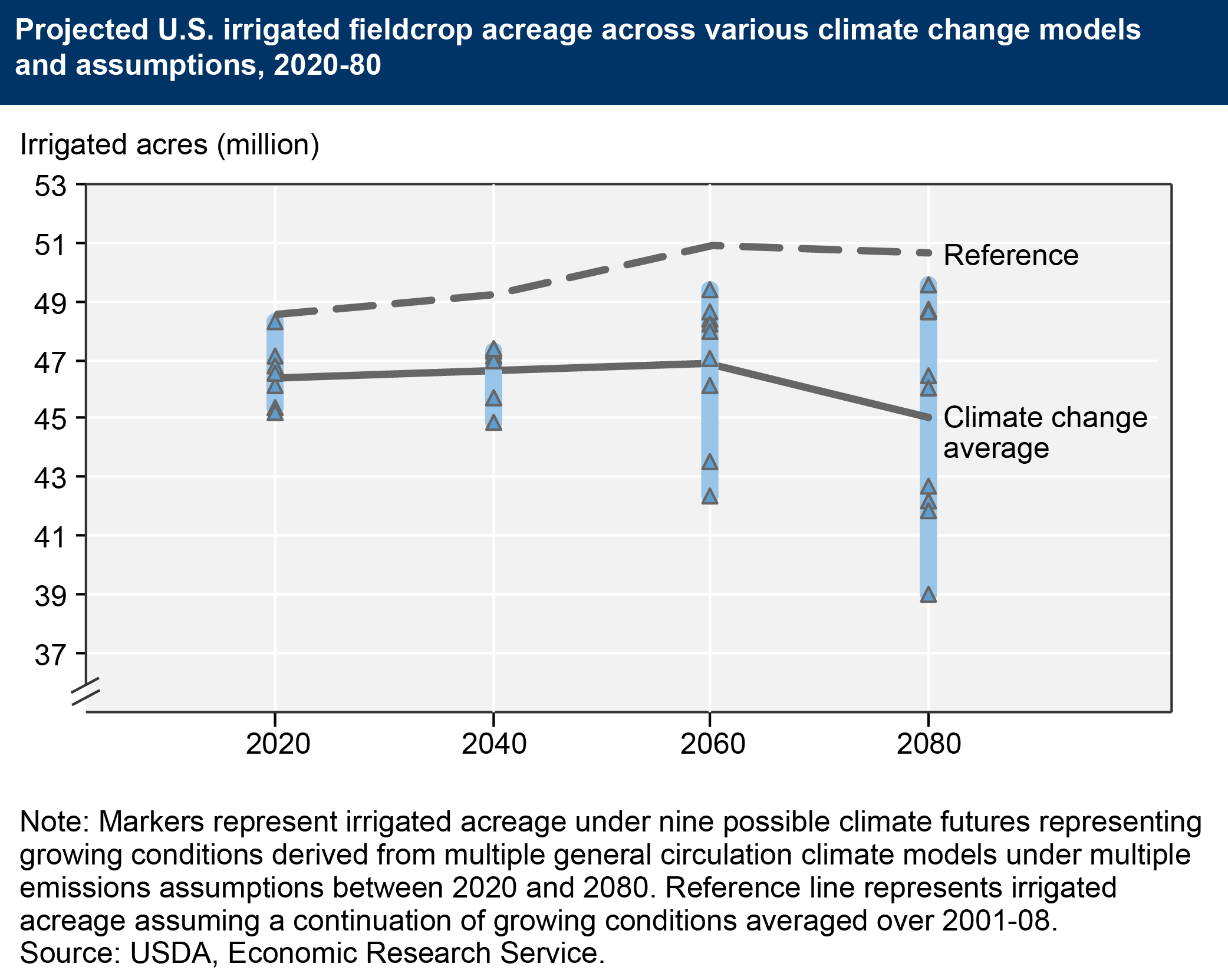U.S. irrigated fieldcrop acreage projected to decline under climate change
- by Elizabeth Marshall and Marcel Aillery
- 11/27/2015

Climate models predict U.S. agriculture will face significant changes in local patterns of precipitation and temperature over the next century. These climate changes will affect crop yields, crop-water demand, water-supply availability, farmer livelihoods, and consumer welfare. Irrigation is an important strategy for adapting to shifting production conditions under climate change. Using projections of temperature and precipitation under nine climate change scenarios for 2020, 2040, 2060, and 2080, ERS analysis finds that on average, irrigated fieldcrop acreage would decline relative to a reference scenario that assumes continuation of climate conditions (precipitation and temperature patterns averaged over 2001-08). Before midcentury, the decline in irrigated acreage is largely driven by regional constraints on surface-water availability for irrigation. Beyond midcentury, the decline reflects a combination of increasing surface-water shortages and declining relative profitability of irrigated production. This chart is from the ERS report, Climate Change, Water Scarcity, and Adaptation in the U.S. Fieldcrop Sector, ERR-201, November 2015.

